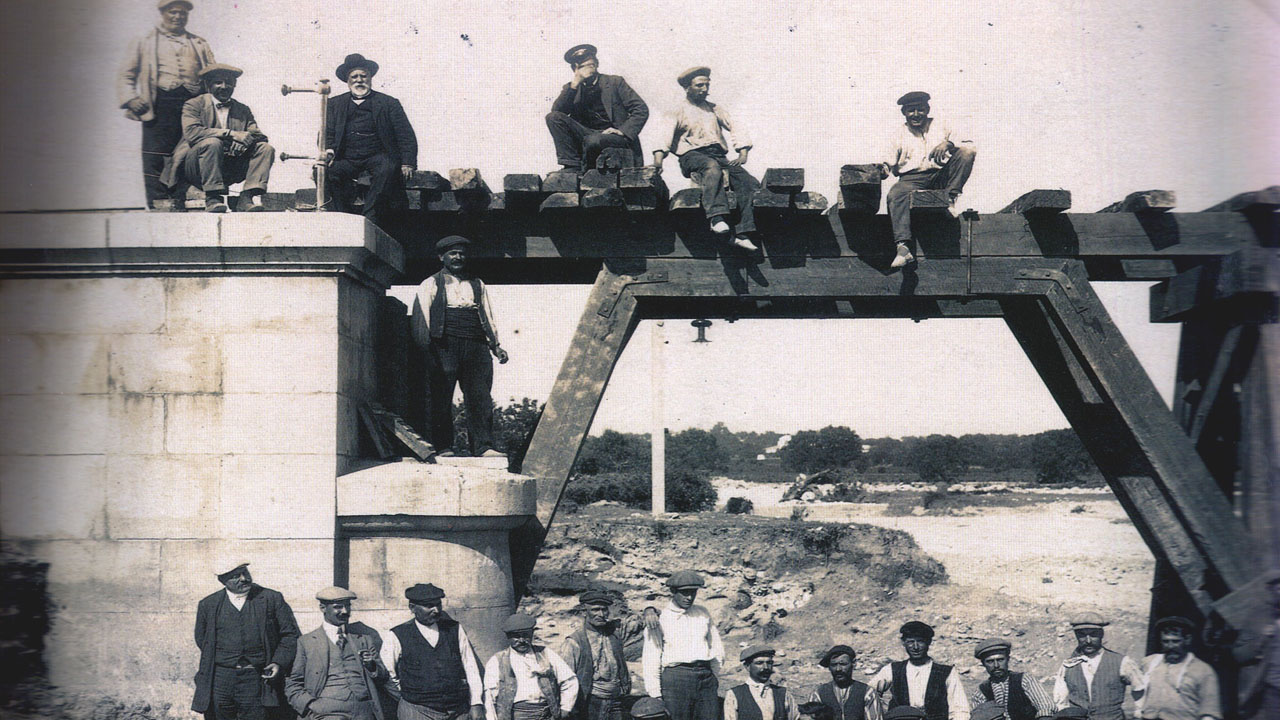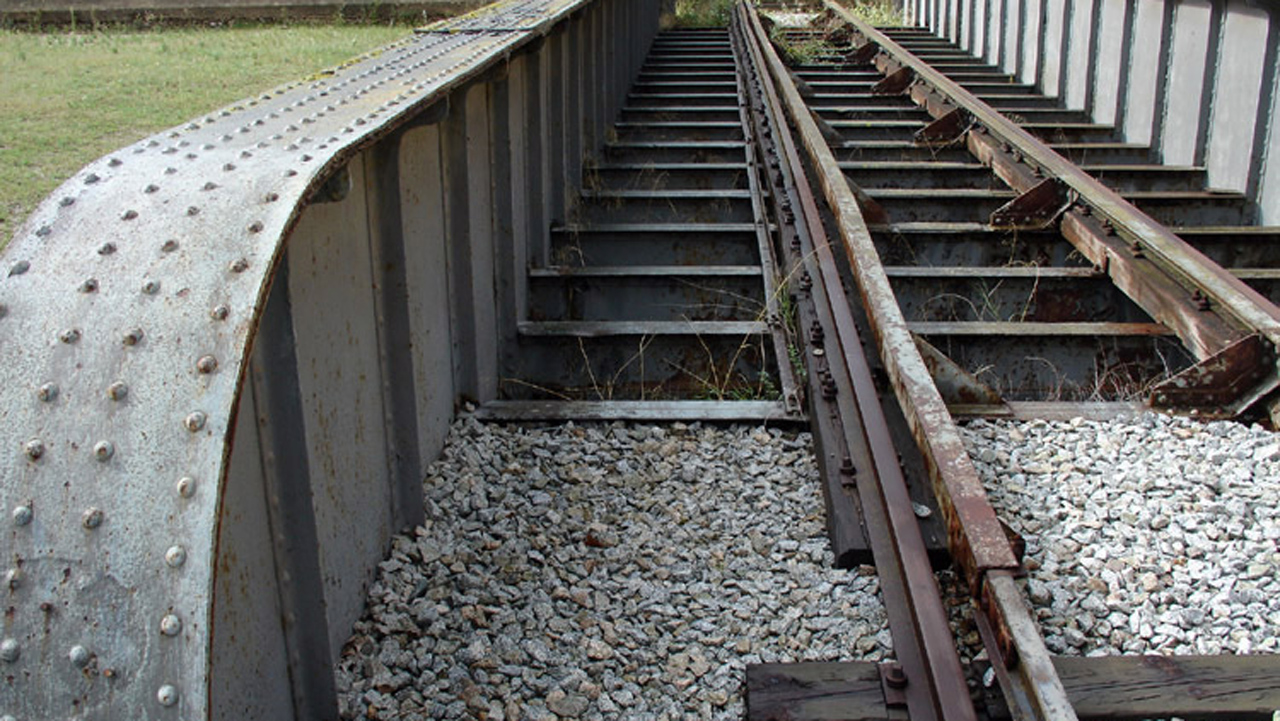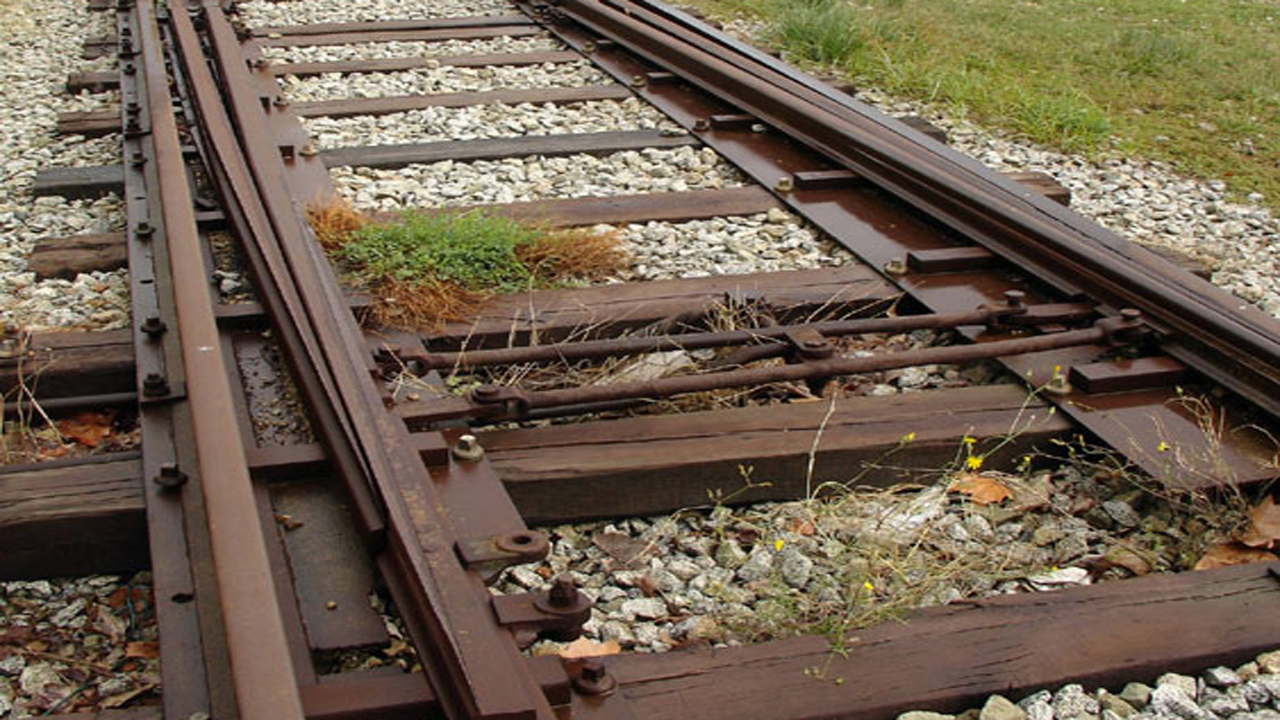
Construction of a railway bridge, 20-30s

Detail of the interior of the "Pineda Bridge"

Detail of a double change of tracks

Construction works of the Pineda Bridge halt, 2017

First "Ou" circulation, 2018
24 - Railway superstructure elements, signals exhibition and "Puente de Pineda" (Pineda Bridge) train stop
Continuing along the Paseo Entrevías pathway, you can see
the two essential parts required for the railway to
function. One is the infrastructure or platform that
supports the track. The second is the superstructure, made
up of rails stabilised by sleepers (wooden or concrete bars
that join the two rails together) that lie on top of the
ballast (the stones forming the support base under the
sleepers). The materials that make up the track have
gradually evolved, adapting to the increased weight of the
vehicles and to safety and comfort parameters.
The great advantage of the train is the low friction between
the wheel and the rail, which enables large loads to be
pulled with a reduced force, as long as the maximum slopes
do not exceed 3.5 mm. The first rails were made of iron and
often broke. Starting in 1870, the first steel rails were
introduced; they are highly resistant and do not experience
much erosion. The Spanish railway adopted the vignole model
(called after the English engineer that designed it).
At the end of the track where the heavy machinery is
located, there is a historic metallic bridge that was built
for Pineda de Mar in 1868 by Maquinista Terrestre y Marítima.
The wall in the background features an exhibition of
different types of track signals that were used to regulate
railway traffic. The end of this itinerary brings us to the
“Puente de Pineda” (Pineda Bridge) train stop. On some
Sundays and important dates, from this platform you can
board a small diesel train or “dresina” (light rail vehicle)
called “Huevo” (Egg), for a trip enabling you to experience
the magic of the railway.


